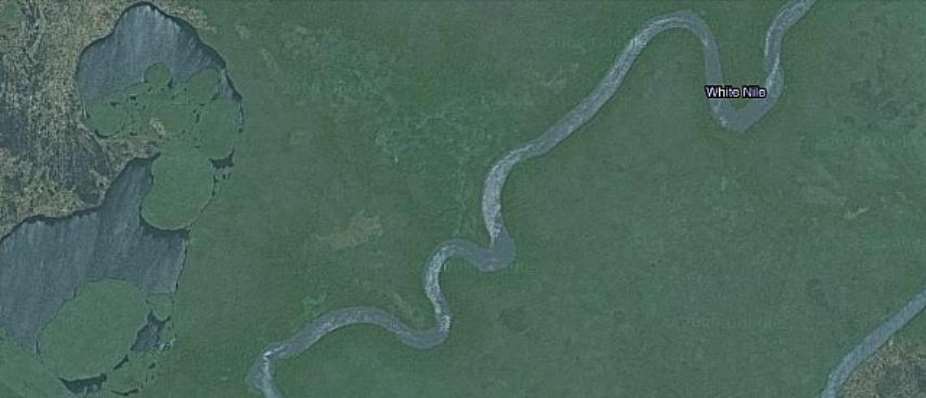Last month Ethiopia started filling its Grand Renaissance Dam (GERD) on the Blue Nile River. The development made downstream dependants of the water body—Egypt and Sudan extremely worried over the inevitable environmental, human, and economic consequences.
Whereas Addis-Ababa appreciates these worries, they are secondary issues to Ethiopia’s development agenda. This constitutes a possible serious conflict of permanent fixture. Uganda has since offered a general approach to resolving this and other related future water resource conflicts across Africa.
Kampala is proposing to the entire regional membership of NBI-the Nile Basin Initiative of Burundi, Democratic Republic of Congo, Egypt, Ethiopia, Kenya, Rwanda, South Sudan, Sudan, Tanzania and Uganda to expeditiously make modalities of broadening the usage of River Congo water which is several times more than that provided by both the Blue and White Niles. While the water volume of the two Niles is 85 billion cubic meters per year that of the Congo River is 3,000 billion Cubic meters per year, which is 35 times more.
Considering the tripartite-nation dispute; whether it takes 10 years as suggested by Egypt or four years as planned by Ethiopia to fill the new dam’s reservoir (estimated to the size of Greater London), ultimately the volume of water reaching both Sudan and Egypt will keep reducing as it’s already the case with diverse effects. Therefore, Kampala’s proposal offers a sensible sustainable option—if only can secure the vital backing and guarantee of multilateral organizations and financial institutions—i.e. United Nations, World Bank, African Development Bank, African Union, Arab League, Inter-Governmental Authority on Development and the Nile Basin Initiative.
The River Congo waters provide a solution that is not limited to responding to current disputants but also more African countries beyond the Equatorial Plateau. In fact, South Africa, which is about 3,373km away from River Congo, is already making use of the Inga Falls on this River. It is jointly developing Inga Dam III, to produce a total of 4,800MW. From this, 2,500MW will be transmitted to South Africa. Once developed to maximum potential, this project, which is funded by the World Bank and African Development Bank at the Inga Dams, will produce a mammoth 40,000MW, enough for half of Africa. This will be the world’s largest hydroelectric project, overtaking that of China’s Three Gorges in Shanghai that produce 22,500MW.
Already many dams in Africa’s Equatorial Plateau are designed at sites that serve as reservoirs for Egypt’s Aswan High Dam. Therefore, if South Africa alone can transmit power for over 3,000km, Egypt which is already directly or indirectly involved in designing and building dams in Sudan, South Sudan, Uganda, Burundi, Tanzania and DRC can easily mobilize stakeholders for a project to push sufficient volumes of water for only 1,386km from River Congo to River Ruvyironza (or Luvironza) in Burundi. From here more water will flow into the Kagera River in Tanzania, and from there into Lake Victoria, which is the lake source of the White Nile.
This collective effort would then guarantee more reliable and sustainable access of water for mega irrigation and power dam projects in Sudan and Egypt and end their sole reliance on the Blue Nile from Ethiopia. More water from the White Nile than the Blue Nile can be generated and accessed by individual member nations for their sustainable needs.
In the long run, this will foster productive cooperation across the board and avert unending tensions, particularly the current belligerence over the River Nile waters.





 Former Kotoko Player George Asare elected SRC President at PUG Law Faculty
Former Kotoko Player George Asare elected SRC President at PUG Law Faculty
 2024 elections: Consider ‘dumsor’ when casting your votes; NPP deserves less — P...
2024 elections: Consider ‘dumsor’ when casting your votes; NPP deserves less — P...
 You have no grounds to call Mahama incompetent; you’ve failed — Prof. Marfo blas...
You have no grounds to call Mahama incompetent; you’ve failed — Prof. Marfo blas...
 2024 elections: NPP creates better policies for people like us; we’ll vote for B...
2024 elections: NPP creates better policies for people like us; we’ll vote for B...
 Don’t exchange your life for wealth; a sparkle of fire can be your end — Gender ...
Don’t exchange your life for wealth; a sparkle of fire can be your end — Gender ...
 Ghana’s newly installed Poland train reportedly involved in accident while on a ...
Ghana’s newly installed Poland train reportedly involved in accident while on a ...
 Chieftaincy disputes: Government imposes 4pm to 7am curfew on Sampa township
Chieftaincy disputes: Government imposes 4pm to 7am curfew on Sampa township
 Franklin Cudjoe fumes at unaccountable wasteful executive living large at the ex...
Franklin Cudjoe fumes at unaccountable wasteful executive living large at the ex...
 I'll 'stoop too low' for votes; I'm never moved by your propaganda — Oquaye Jnr ...
I'll 'stoop too low' for votes; I'm never moved by your propaganda — Oquaye Jnr ...
 Kumasi Thermal Plant commissioning: I pray God opens the eyes of leaders who don...
Kumasi Thermal Plant commissioning: I pray God opens the eyes of leaders who don...
